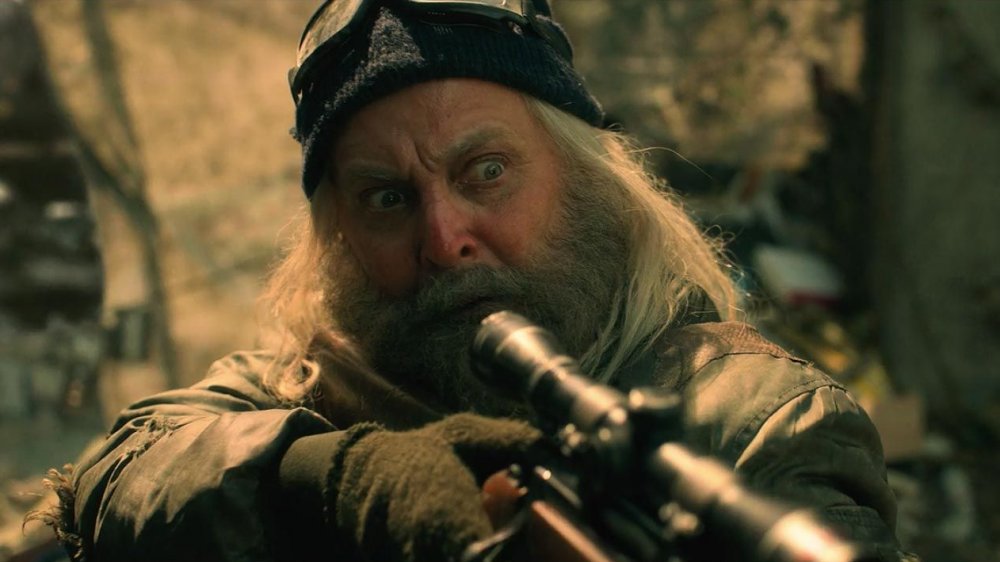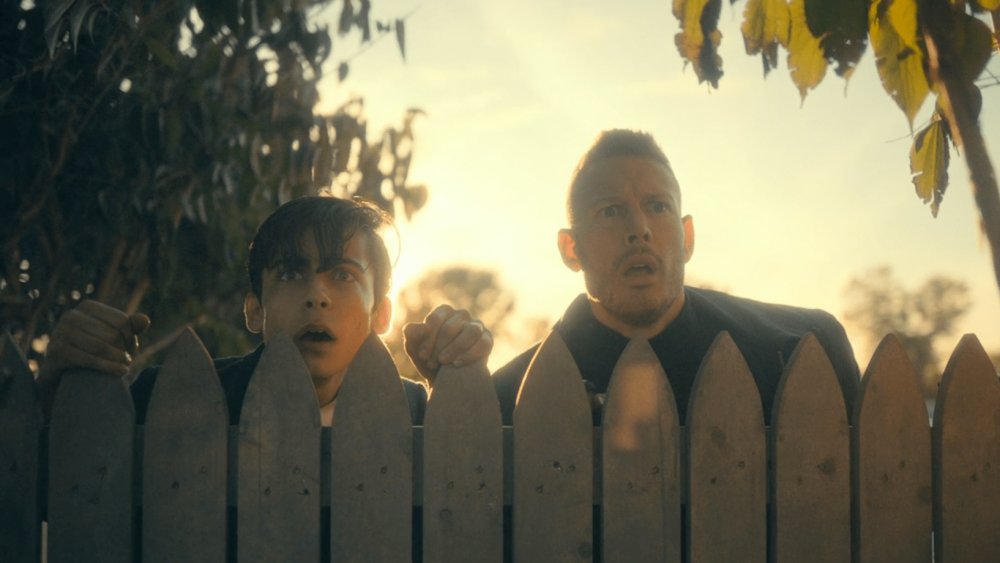The Number Five Plot Hole That Bothers Umbrella Academy Fans
If you thought untangling the first season of Netflix's The Umbrella Academy was more challenging than fitting Luther into a 1950s car, season two gets even twistier, thanks to more time travel.
In case you need The Umbrella Academy season one ending explained, here's a refresher: Number Five's (Aidan Gallagher) attempt to bring the Academy members along on a time jump to escape the apocalypse went predictably wrong. Each of them ended up in the same Dallas alleyway, but at different times in the early sixties. Klaus (Robert Sheehan) and Ben (Justin H. Min) were dropped in 1960, a voice-less Allison (Emmy Raver-Lampman) in 1961, Luther (Tom Hopper) a year later, and Diego (David Castañeda), Vanya (Ellen Page) and Five in September, October and November 1963 respectively. Five immediately learns from a now-aged Hazel (Cameron Britton) that he and his siblings are facing another apocalypse in 1963, this one apparently caused by nuclear war with the USSR. The two former assassins time jump together to ten days earlier, at which point Hazel is murdered by Swedish assassins.
This reflects the plot of the first season. Five learns that his family is about to be destroyed in a mysterious apocalypse — although at least he knows the direct cause this time — and time travels to figure out how to prevent it and save them. However, Five has been to Dallas in November 1963 before — and it's this wrinkle that may have caused a potential paradox.
Here's the Number Five plot hole that bothers Umbrella Academy fans, and why it might not be an oversight after all.
Number Five changes his former self before he travels to the Academy
Back in the first episode of season one, 58-year-old Five (Sean Sullivan) opened a portal on November 22, 1963 — the day of President Kennedy's assassination — and returned to the Academy in 2019. (However, as Five later explains, he made a miscalculation with a decimal point and accidentally returned his consciousness to his 13-year-old body.)
In episode eight of season two, teenage-looking Five reunites with the pre-jump version of himself, with violent, itchy consequences. Teenage-looking Five and Luther need older-looking Five's briefcase so they can get their family back to 2019. But thanks to paradox psychosis, combined with their general propensity towards solving problems with violence, both Fives plot to kill the other. Ultimately, teenage-looking Five opens the portal, and Luther kicks older-looking Five through it. Teenage-looking Five's theory is that this should prevent a potential paradox: a version of Five still went back to the Academy in 2019 to stop that apocalypse, just as teenage-looking Five did in season one. As long as a version of Five exists in that timeline, the Five in sixties Dallas can keep existing.
However, some fans are not so sure.
The problem is that the interactions between teenage-looking Five and older-looking Five, and older-looking Five and Luther, change the Five that goes through the portal from the version who went through the portal in season one. For example, Luther tells older-looking Five that Vanya was the cause of the apocalypse in 2019. Teenage-looking Five spent most of the first season trying to figure this out: the version that goes through the portal this time around already knows. Which means his actions would likely be different, and he might actually be able to stop Vanya, which would change the timeline.
Did the Umbrella Academy stumble into a paradox?
Depending on which model of time travel you subscribe to, this change could cause a paradox. If 58-year-old-looking Five prevented the apocalypse in 2019 — or did anything differently to teenage-looking Five — the Five and his siblings in sixties Dallas would all know about it, because they would have lived through it. Also, they would probably never have had to time travel to sixties Dallas, because there wouldn't have been an apocalypse to escape.
The fact that teenage-looking Five and his siblings are still in sixties Dallas, apparently with the same memories of the version of 2019 we saw in season one, means that there must be different timelines in this universe. Changes to one timeline don't impact characters who have already experienced a different version of that timeline. For example, if the older-looking Five decided to use the information Luther gave him and stop the apocalypse by killing Vanya in 2019, the Vanya in sixties Dallas wouldn't die.
However, the snag in this theory is the Commission. Their whole reason for being is to preserve the Timeline, the one true version of events. Which means that at least as far as they're concerned, there can only be one timeline. We know things can deviate from this — that's why the Commission exists. So, maybe the Commission knows that alternate timelines exist, and they don't like it. Or maybe they don't know about this, and don't realize that they're fighting an uphill battle.
Confused? Hopefully there will be a third season of Umbrella Academy, and it will all get straightened out. Although judging by the show so far, and the biggest unanswered questions in Umbrella Academy season two, it might just set up even more questions.


